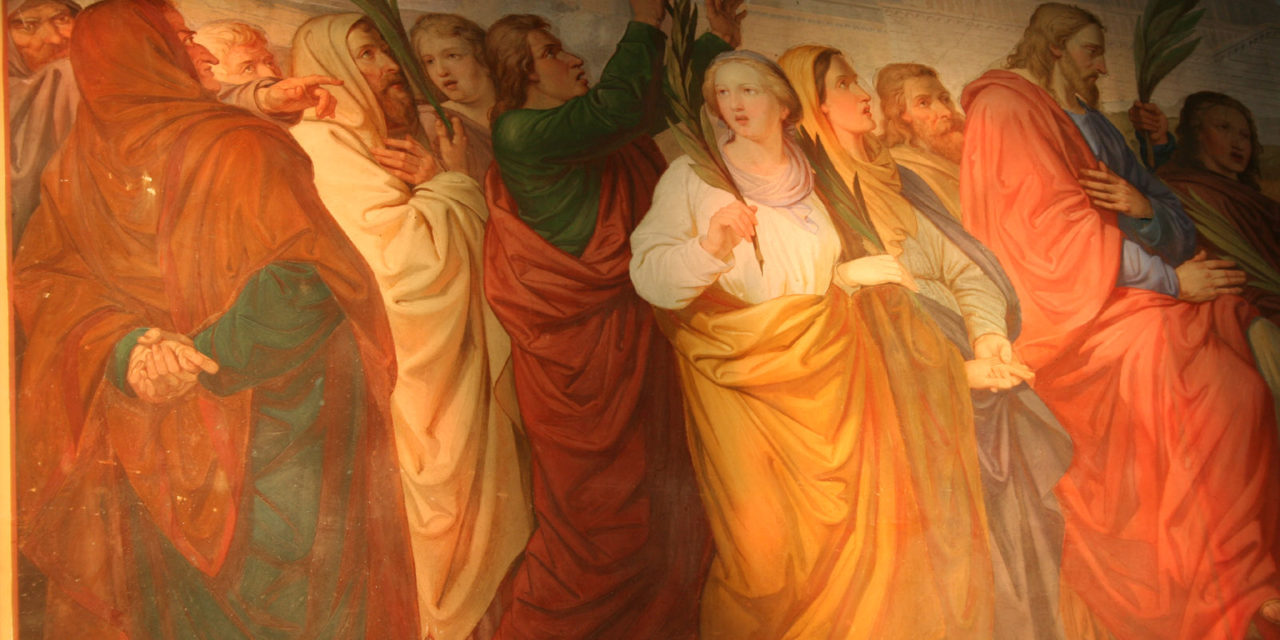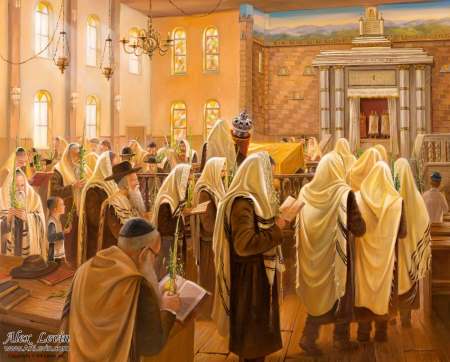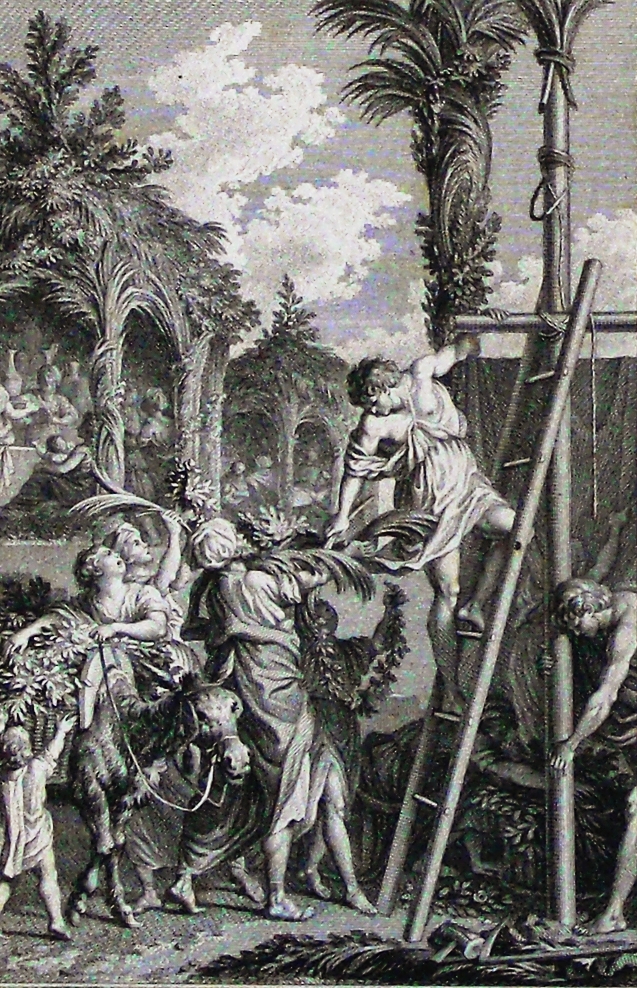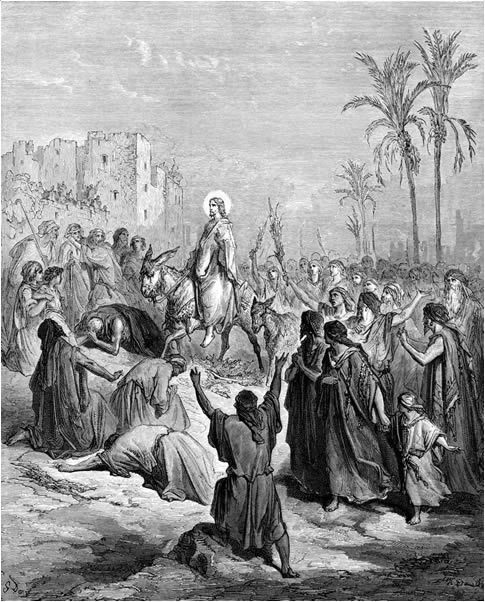Palm Sunday marks the beginning of Holy Week. Jesus rides in on a donkey [hamor, חמור ], which may seem a little strange. However, the Gospel of Matthew (Matt 21:5) tells us that Jesus chose to ride in on a donkey, to fulfill Zechariah’s prophecy:
Rejoice greatly, Daughter Zion! Shout, Daughter Jerusalem! See, your king comes to you, righteous and victorious, lowly and riding on a donkey, on a colt, the foal of a donkey. (Zechariah 9:9) (NIV) [*In the King James Version of the bible, they use “ass” instead of donkey.]
He rode from the East to Jerusalem, and the people went ahead of Him and spread their cloaks and palm branches on the road — Those following Him shouted Hosanna –confirming their belief in His divinity:
“Hosanna to the Son of David!”
“Blessed is he who comes in the name of the Lord!”
“Hosanna in the highest heaven!”(Matt 21)
This hosanna shout is similar to the Psalm for Tabernacles, and the Tabernacle procession, (even though in this instance, the procession took place before Passover.) (Barker)
Lord, save us!
Lord, grant us success!
Blessed is he who comes in the name of the Lord.
From the house of the Lord we bless you.
The Lord is God,
and he has made his light shine on us.
With boughs in hand, join in the festal procession
up to the horns of the altar. (Psalm 118:21-27)
Palm Sunday is the beginning of the Savior’s last week before He is crucified and resurrected. Barker explains that “the Gospel writers present Palm Sunday as the people’s recognition of Jesus as the Davidic king.” Like the Tabernacle procession, they shout hosanna as they confirm that this is the Lord, their savior.
Hosanna, ‘Save us!’ is another form of the verb that gives the title Victorious One and ‘in the name of the LORD’ could also be translated ‘with the name of the LORD’. ‘He has given us light ‘ is a difficult text, which the Septuagint understood as ‘he has shone forth for us’ – the answer to the ancient high-priestly prayer: ‘may the LORD make his face shine upon you’ (Num 6:25). (Barker)
The Feast of Tabernacles and Palm Sunday
You may wonder why Palm Sunday is like the Tabernacle procession. The Feast of Tabernacles or Sukkot is a seven-day celebration where the Israelites (or Jewish people today) build a temporary shelter with a roof of palm leaves or similar vegetation. They eat their meals in the temporary shelter to help them remember that God protected and provided for them during the exodus. On the seventh day of Tabernacles is the Hoshana Rabbah, which includes circling the altar seven times, repeating a prayer that begins and ends with the word hosha῾-na (meaning, “Save, please!”). The last circling involves the bundle of willow branches.
The Mishnah records that during Tabernacles, a procession would turn back at the eastern gate and face towards the temple saying: ‘Our fathers when they were in this place turned with their backs towards the temple of the Lord and their faces towards the east and they worshipped the sun towards the east; but as for us, our eyes are turned toward the Lord’ (m.Sukkah 5.4). This clearly refers to Ezekiel’s account of men in the temple facing east, holding branches before their faces and worshipping the sun (Ezek. 8.16-8), presumably in a celebration akin to Tabernacles. The Therapeuts (Philo Cont.Life 27) and the Essenes (Josephus War 2.128) also worshipped towards the rising sun, and the vision in Revelation 7 describes a great multitude holding palm branches, standing before the angel who came from the sunrise with the seal of the living God. (Barker, p 4)
There seems to be a lot of symbolism in the Feast of Tabernacles, Hoshana Rabbah, and Palm Sunday. Even more, than I mention here. Hoshanat means bring us salvation.




